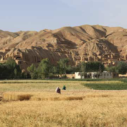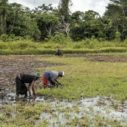
Search
Articles

Editorial Dimensions 11
‘Let’s not waste this opportunity’ was the appeal made by Sania Nishtar, Pakistan’s Minister of Poverty Alleviation, at a high-level event on the side lines of the UN General Assembly, organised by the MPPN and OPHI, and co-hosted by the Governments of Chile and Pakistan and the United Nations Development Programme (UNDP).

How the pandemic will aggravate multidimensional poverty in Afghanistan
A simulation exercise of the effects of COVID-19 in the South Asian country revealed socio-economic disruption and significant health threats for a population already suffering from food insecurity and lack of adequate sanitation. According to the analysis, the incidence of multidimensional poverty in Afghanistan could increase from 51.7% to 73.5%.


COVID-19 as a Challenge to Governance
We are in a period of great uncertainty.
Today, Latin America is the epicentre of the COVID-19 pandemic. On various fronts, we are facing a situation for which we have no precedents to draw on when seeking explanations or devising possible solutions. Indicators of all kinds, be it health, economic, social or cultural ones, are reaching levels that we could not have anticipated just a few months ago.

National Multidimensional Poverty Measures: A local, essential, and innovative tool for national planning during the COVID-19 pandemic
COVID-19 has brought to the world economic and health challenges not seen for almost a hundred years; yet this crisis has also highlighted the innovation and creativity of countries in the use and adaptation of their own multidimensional poverty indicators, as well as other measurement tools to better meet this huge challenge. In this note we would like to highlight some innovative techniques that the participants of the Multidimensional Poverty Peer Network (MPPN) are implementing in response to the global pandemic.
One of the core functions of the MPPN is the exchange of measurement knowledge and experience. The knowledge generated in one country can serve or inspire other countries in their measurements. At a time when global collaboration is required, we will continue our efforts to facilitate knowledge exchange amongst MPPN countries.












